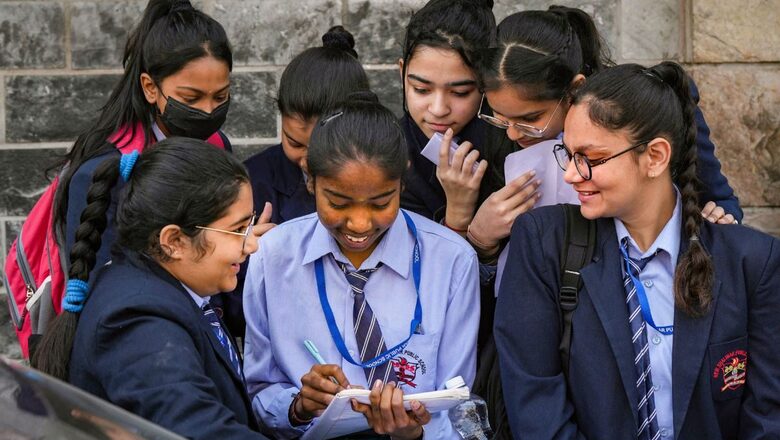
views
One is often confronted with the question of how to reimagine the future of education with technology and whether it can replace teachers. The simple answer to that remains “No”. Evidence from around the world shows that, over time, the role of teachers has become more central, and not peripheral, as the result of the effective use of EdTech. While technology has revolutionised learning methods and has the potential to remove some of the tasks that teachers have to perform, it certainly cannot supplant the indispensable role of educators.
Currently, India is home to over 9.5 million school teachers, most of whom are grappling with the residual impacts of the global pandemic and have little choice but to incorporate digital tools into their teaching practices. However, India’s “Digital India” program, which seeks to propel the nation into a digitally empowered society and knowledge-based economy, places a stronger emphasis on technology for students rather than for teachers. According to UDISE 2019-20, only one in four teachers in India was trained to use a computer for teaching. The ratio is even poorer for government school teachers in the country. While we have been busy distributing hardware in schools, we have somehow forgotten about the messenger of learning, “the teachers”.
Teacher and technology: An essential partnership
Technology has the potential to enable personalised learning or experiences that are more engaging and relevant. Each student in a classroom is at a different stage and has a different pace of learning. It is almost impossible for a teacher to take care of each child, given the amount of syllabus that has to be covered in a limited time frame. This leads to several students being left behind in the classroom and they are never able to catch-up with their peers. Technologies like Personalised Adaptive Learning Tools (PAL), can create a big difference here. They can individualise the learning path for each student, providing targeted instruction to enable teaching at the right level at scale, thereby aiding teachers to make an effective classroom.
However, technology will never be powerful enough to replace teachers from a classroom. Teachers offer the invaluable human touch, fostering emotional connections, guiding complex problem-solving, nurturing social skills and emotional intelligence, igniting inspiration and passion, and adapting creatively to diverse learning styles — all elements that technology, for all its benefits, cannot fully replicate. The partnership between teachers and technology is indispensable. In situations where there is a shortage of educators or when teachers have limited skills, technology can serve a significant role in aiding learners in addressing this shortfall to some extent. In the context of contemporary education, the collaboration between teachers and technology is crucial, merging the skills of educators with the benefits of digital tools to cultivate an interactive learning atmosphere essential for the progression of education.
Train Teachers for Technology
As technology continues to grow, becoming a larger part of our education system, it becomes essential that teachers who are going to use it to impart education are adequately trained. The quality of an education system relies substantially on the quality of the teachers. Merely sending students to schools and investing in providing technology hardware and software alone will never solve the problem. Majority of Indian teachers are still uncomfortable with digital integration.
Although the significance of teachers’ upskilling is widely acknowledged, the primary responsibility for this falls upon the teachers themselves, particularly noticeable in private schools. A 2022 report titled, “Digital Transformation of the Teaching Community”, stated that 35.54 per cent of teachers prepared themselves by taking courses provided by institutions, 25.62 per cent learned from friends/colleagues/family, and 19.01 per cent equipped themselves by undertaking self-sponsored courses. While self-responsibility is very important, it is also incumbent upon government bodies, schools and educational institutions to consistently offer direct learning opportunities for educators to acquire new techniques.
We need to train teachers first rather than students. Students will be left behind if we do not invest in the digital skills of teachers. Many teachers still prefer traditional ways of teaching that end up into rote learning by students. Adequate training will not only upskill them, but will also help bring a mindset shift within teachers who are more accepting of technology rather than being vary of it. The current approach of a top-down pressure of using technology will not solve the problem. Keeping the current teacher workforce in mind, we need to be specific and focus on the kind of skills that will be needed in the future to integrate technology in classrooms, and the gaps that should be filled to avoid learning misses. The focus on providing internet access, tablets in schools should not overshadow the importance of preparing teachers to teach effectively using the latest available technology.
Ed-Tech is here to stay. It is the future of how students will learn and how teachers will teach. A lot of new tools and technologies have come up. Several ed-tech organisations have massively scaled up and are doing well in providing the right education to students. The Indian government has been rightly pushing towards the use of technology in schools and have highlighted in several policies and programmes. All of this has to come together to reimagine the future of education. And teachers play a pivotal role here. They need to be trained adequately to fill in learning gaps and merge technology with traditional teaching methods smoothly. Teachers are central to the achievement of SDG 4 of ensuring inclusive and equitable quality education and promoting lifelong learning opportunities for all. As we are aiming towards the 2030 deadline for the SDGs, it is imperative that we provide the training and tools teachers need to build confidence and competence with computer science technology.
Mahek Nankani is Lead, Growth & Partnerships at The Educational Initiatives. Views expressed in the above piece are personal and solely that of the author. They do not necessarily reflect News18’s views.




















Comments
0 comment